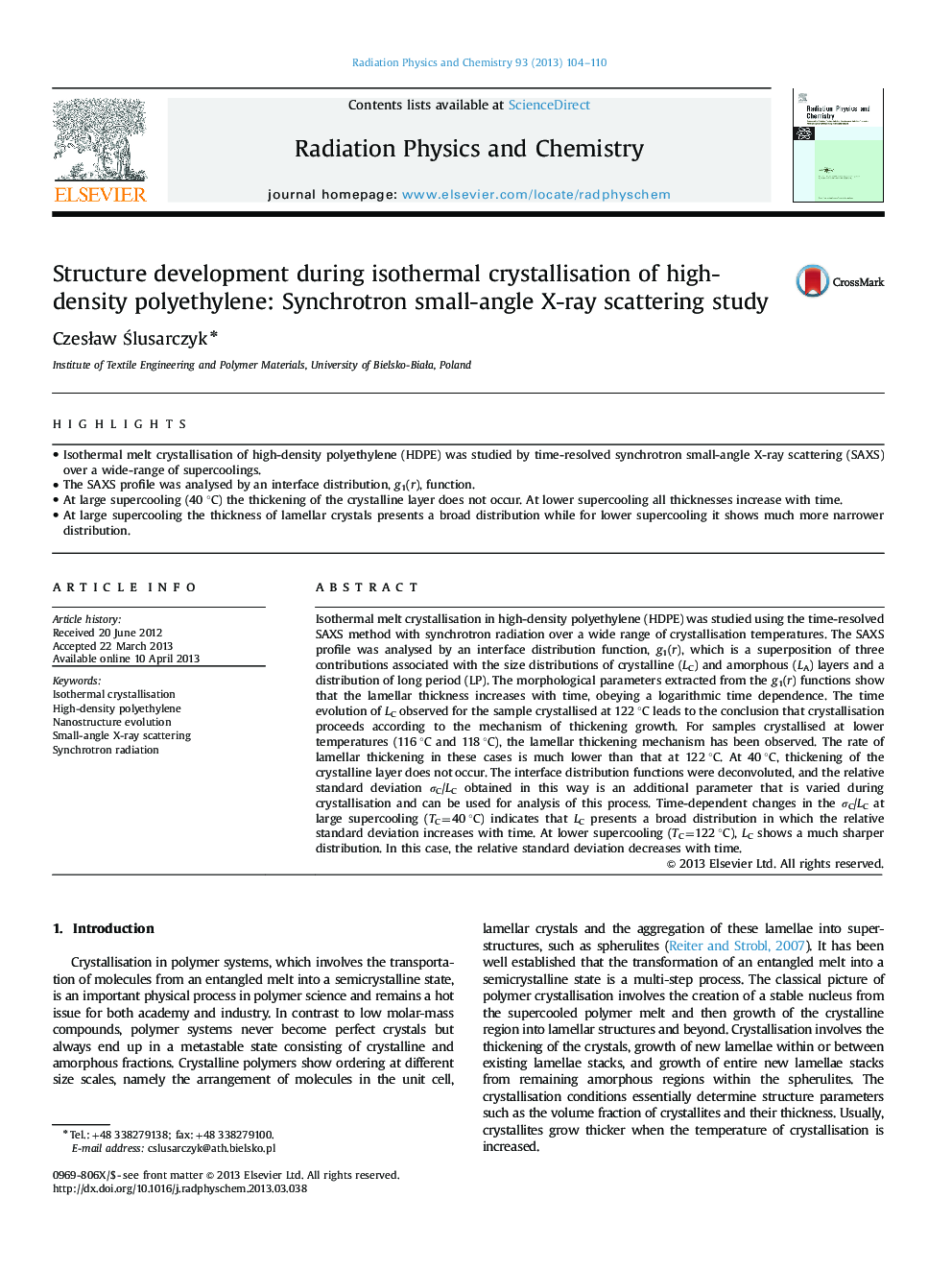| کد مقاله | کد نشریه | سال انتشار | مقاله انگلیسی | نسخه تمام متن |
|---|---|---|---|---|
| 1891434 | 1533531 | 2013 | 7 صفحه PDF | دانلود رایگان |

• Isothermal melt crystallisation of high-density polyethylene (HDPE) was studied by time-resolved synchrotron small-angle X-ray scattering (SAXS) over a wide-range of supercoolings.
• The SAXS profile was analysed by an interface distribution, g1(r), function.
• At large supercooling (40 °C) the thickening of the crystalline layer does not occur. At lower supercooling all thicknesses increase with time.
• At large supercooling the thickness of lamellar crystals presents a broad distribution while for lower supercooling it shows much more narrower distribution.
Isothermal melt crystallisation in high-density polyethylene (HDPE) was studied using the time-resolved SAXS method with synchrotron radiation over a wide range of crystallisation temperatures. The SAXS profile was analysed by an interface distribution function, g1(r), which is a superposition of three contributions associated with the size distributions of crystalline (LC) and amorphous (LA) layers and a distribution of long period (LP). The morphological parameters extracted from the g1(r) functions show that the lamellar thickness increases with time, obeying a logarithmic time dependence. The time evolution of LC observed for the sample crystallised at 122 °C leads to the conclusion that crystallisation proceeds according to the mechanism of thickening growth. For samples crystallised at lower temperatures (116 °C and 118 °C), the lamellar thickening mechanism has been observed. The rate of lamellar thickening in these cases is much lower than that at 122 °C. At 40 °C, thickening of the crystalline layer does not occur. The interface distribution functions were deconvoluted, and the relative standard deviation σC/LC obtained in this way is an additional parameter that is varied during crystallisation and can be used for analysis of this process. Time-dependent changes in the σC/LC at large supercooling (TC=40 °C) indicates that LC presents a broad distribution in which the relative standard deviation increases with time. At lower supercooling (TC=122 °C), LC shows a much sharper distribution. In this case, the relative standard deviation decreases with time.
Journal: Radiation Physics and Chemistry - Volume 93, December 2013, Pages 104–110